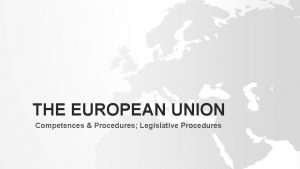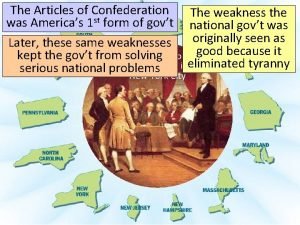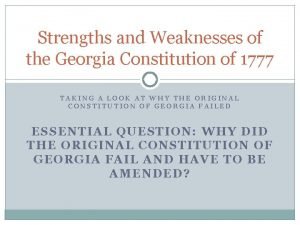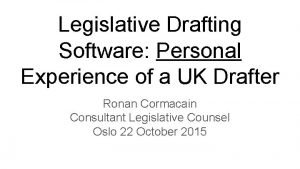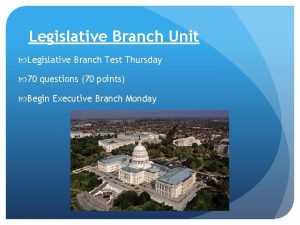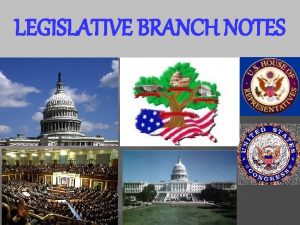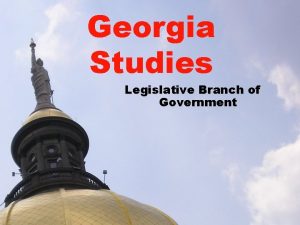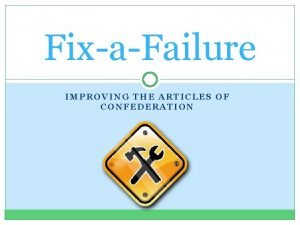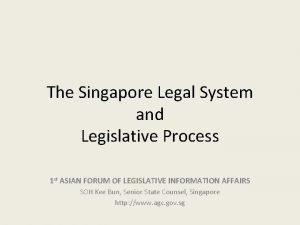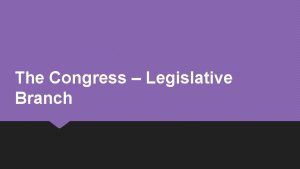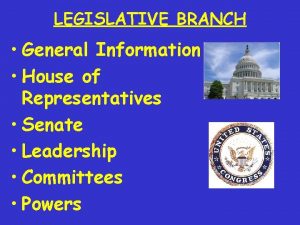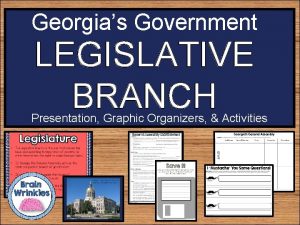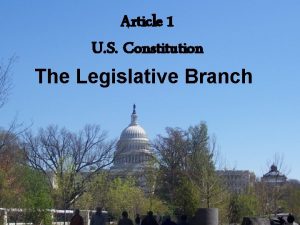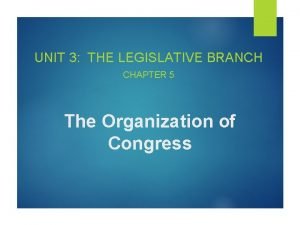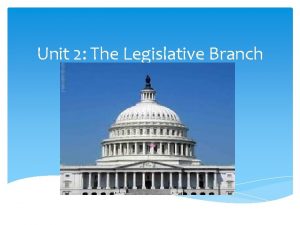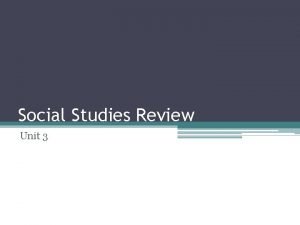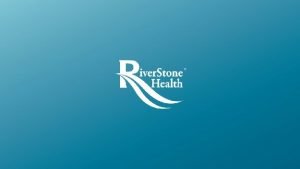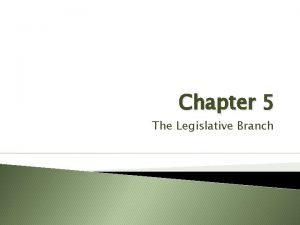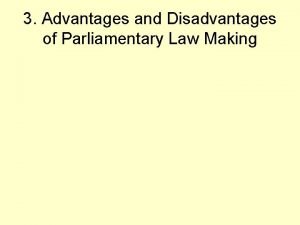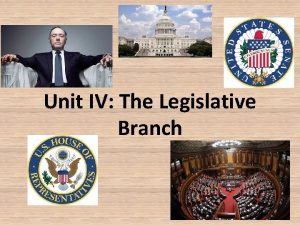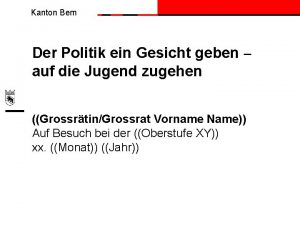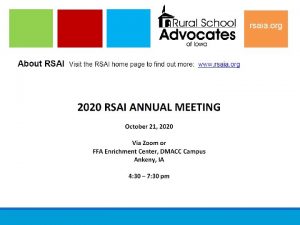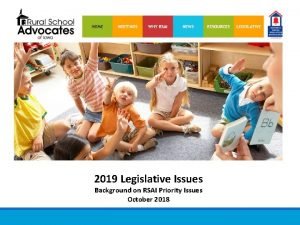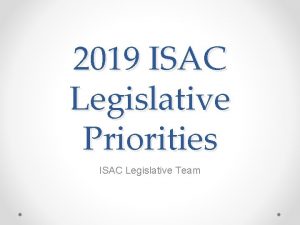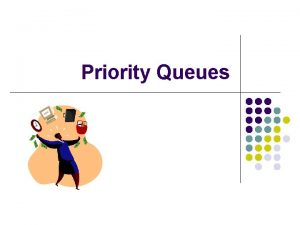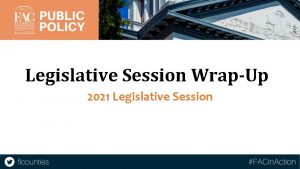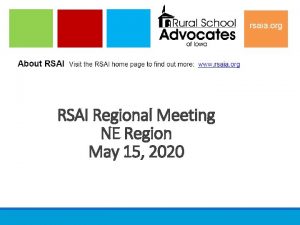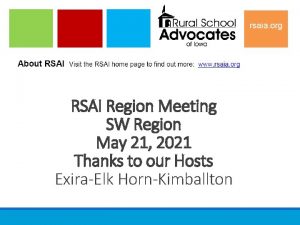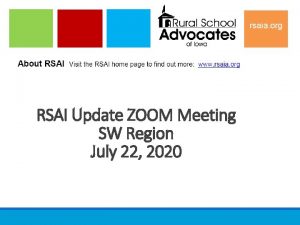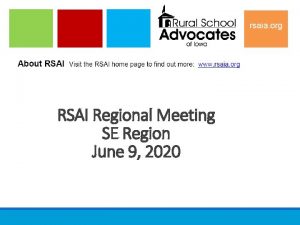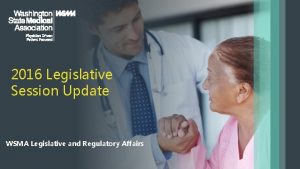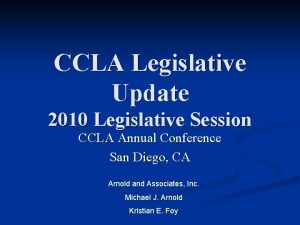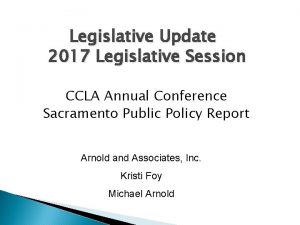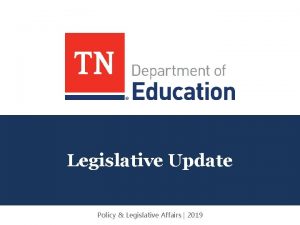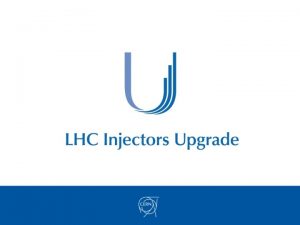Summary of 2019 Legislative Session RSAI Priority Action






































- Slides: 38

Summary of 2019 Legislative Session RSAI Priority Action

Themes of Rural School Needs q Resources: $$$$$$$ state, local, federal, other (partnerships, sharing, grants, incentives) q Flexibility: One size does not fit all. Especially in local schools, staff where many hats. Strict expenditure and legal requirements do not always work with very small economies of scale. q Student needs: Changing demographics have significantly impacted rural schools. Poverty, Mental Health, Immigration and Aging resident population, bigger farms with fewer kids, transportation and other barriers to participation, population sparsity

Recent Accomplishments Benefiting Rural Districts Before 2018: ◦ Management fund authority to pay for retirements over age 65 and costs of arbitration ◦ PPEL flexibility to pay for repairs over $1, 500 ◦ Do. P Flexibility ◦ Home Rule Statute ◦ Categorical Fund Flexibility In 2018 Session ◦ Even more Do. P Flexibility ◦ Even more Categorical Fund Flexibility ◦ Staff Flexibility – CTE options for hard‐ to‐staff content and local offerings of on‐line learning ◦ Progress on Transportation (grants) and Formula Equality ◦ Extension of Operational Sharing Incentives In 2019 Session ◦ Transportation in the Formula ◦ Formula Equity ◦ Extension of WGS/reorganization Incentives ◦ State Penny Extension ◦ Teacher shortage flexibility: Praxis waiver, concurrent enrollment STEM offer and teach, online learning flexibility

Legislation in the 2019 Session Ø 2, 067 pieces of legislation introduced, some actually considered Ø 169 agreed to by the House and Senate in the same form and sent to the Governor ØOf those 169, 78 were finished the last week of Session ØGovernor vetoed sparingly, nothing that impacted schools. 4

Priorities Status on Page 4

State Penny Extension

Action Comments HF 546 was approved by 95 House ØSpecifically for RSAI, expanded the members and 48 Senators sending it criteria for certificate of need for to the Governor. smaller schools to include impact on student learning and did not Extends through Jan. 2051. increase the enrollment category for CON requirements. Increased contribution to property tax equity and relief over time to ØAdded safety and security 30% of the total revenue. equipment as an allowable expense. No other action on funding for security staff. ØIncrease in PTR will make it harder to repeal in 2051. ØSee specifics in the Legislative Digest.

Transportation Equity

Action HF 307 was enacted. $19 M in transportation in the formula for FY 2020. Comments ØFormula supplement instead of a grant – much more secure. ØReimbursement is based on prior year’s expenditures (and other factors in a formula) ØBrings all districts down to $381 per pupil enrolled (state average was $330 per pupil enrolled in 2017‐ 18) Also, state Board of Education administrative rules are proposed to extend ride times by 15 minutes ØDE is required to review usage with local process following a and the formula. public hearing. ØSee specifics in the Legislative Digest.

Formula Equity

Action HF 307 was enacted. $2. 9 M in the formula for FY 2020. Closes the gap by another $5 per pupil. Comments Ø$1. 7 million reduces property taxes in those districts with higher DCPP Ø$1. 2 million increases DCPP by $5, closing the gap to $165 from highest to lowest DCPP ØAt this rate, it will take 33 more years to eliminate the gap. ØSee specifics in the Legislative Digest.

Teacher Shortage and Quality Instruction Rural school districts require maximum flexibility to provide great instruction to all Iowa students. There was some progress in 2019 but rural districts will struggle with enough applicants to fill needed positions, in some cases none at all, and in keeping great people when other districts pay more. Loan forgiveness and grow‐your‐own strategies will have to be on the list. Much of this goes back to adequate funding, too.

Action SF 603 Concurrent Enrollment for 1 math or 1 science course to meet offer and teach. Comments ØSome flexibility will certainly help all districts, including rural schools, attract and retain great teachers. SF 394 allows several online ØNo where near being done: still learning options to meet offer and need some work through teach. resources for loan forgiveness, incentives for teachers to work in SF 159 Praxis requires DE to set shortage area schools, CTE strand score and creates conditional to recruit students into teaching, license for a new teacher with a and additional offer and teach job offer. flexibilities.

DE’s Annual Condition of Education Report shows average salary by school size (which is a good but not perfect predictor of rural districts), showing a growing difference in pay between the averages of the smallest and largest category of school size, now at $15, 527.

Geography Impacts Rural Schools and Students Distance from Services – transportation takes time. Making up minutes for snow days even becomes difficult if there’s two+ hours on either side of the day. Transportation equity funding is HUGE, but there are still barriers. Fewer Collaboration Partners – whether that’s private sector businesses for internships in CTE programs or Mental Health services providers for students Young teachers are not willing to locate in a community with long commutes to amenities, so something has to make up for the lack of access to entertainment, housing, and other services.

Funding / SSA / Formula Changes

Action Comments HF 306 set 2. 06% increase in SSA, ØThird highest increase in a decade. Was signed on Feb. 19, 2019, pretty ØExceeds the REC revenue estimate close to Feb. 14, 2019, 30‐day for FY 2020. deadline. ØCompleted on time based on new deadlines (within 30 days of the Governor’s budget for the upcoming school year, so essentially four months before the school fiscal year begins. ) ØOther funds (transportation and formula equity, state penny extension) must be considered in total package. ØBut SSA is the bread and butter of school district budgets. Some data:

Iowa State Cost Per Pupil Funding History 16% 14% Set by formula based on economic conditions automatically from the beginning of the formula through 1993‐ 94. Legislatively set one year in advance of the budget year beginning in 1994‐ 95. Beginning in FY 18, set within 30 days of Gov. 's Budget, no longer a year in advance. 10% 8% 6% Historical annual cost increase of doing school is 3. 0 -4. 0% (orange band below): SSA set in 9 of the last 10 years lags the cost increase schools have 4% 2% 0% 72/73 73/74 74/75 75/76 76/77 77/78 78/79 79/80 80/81 81/82 82/83 83/84 84/85 85/86 86/87 87/88 88/89 89/90 90/91 91/92 92/93 93/94 94/95 95/96 96/97 97/98 98/99 99/00 00/01 01/02 02/03 03/04 04/05 05/06 06/07 07/08 08/09 09/10 10/11 11/12 12/13 13/14 14/15 15/16 16/17 17/18 18/19 19/20 Percent Increase in State Cost Per Pupil 12% 2. 06% for FY 2020 is third highest increase in 10

Number of Iowa Public School Districts 1999 -00 through 2019 -20 400 , 07000 380 , 06000 360 , 05000 340 320 , 04000 300 , 03000 280 260 , 02000 240 , 01000 220 0 ‐ 2 19 9 20 ‐ 1 18 8 20 ‐ 1 17 7 20 ‐ 1 16 6 20 ‐ 1 15 5 Per Pupil Cost set by SSA 20 ‐ 1 14 4 20 ‐ 1 13 3 20 ‐ 1 12 2 20 ‐ 1 11 1 Number of Iowa School Districts 20 ‐ 1 10 0 20 ‐ 1 09 9 20 ‐ 0 08 20 20 07 ‐ 0 8 7 ‐ 0 06 6 20 ‐ 0 05 20 04 ‐ 0 5 4 20 ‐ 0 03 3 20 ‐ 0 02 20 ‐ 0 01 1 20 ‐ 0 00 20 00 ‐ 2 99 19 2 , 00000 0 200

State Revenue Policy ØSchool funding adequacy is a function of sufficient state revenues and mix of revenue sources for schools. ØContinued property tax relief focus confuses the issue – state investment increases to make up for a reduced property tax dollar but schools don’t receive those funds as additional revenue. ØCheck out the Legislative Digest for additional information on tax cuts, policy decisions limiting state revenue, and increased tax credit thresholds of private school scholarships (STOs)

Student Mental Health

Action HF 690 Children’s Mental Health System set up a system but did not provide funds. Comments ØHF 690 is a good structural start, but may not overcome the geography limitation of service location. Just like attracting HF 758 Education Appropriations teachers, there are MH services included $2. 1 million to AEAs for MH deserts without services. training of educators and a resource clearinghouse. ØAEA training is a good start, but it’s not a one‐time thing. Must be SF 376 MH content in High School ongoing. health curriculum, did not get approved in the Senate. ØBoth SF 376 and SSB 1240 are in committee and alive for further SSB 1240 in Senate Human action as the 2020 Session begins. Resources Committee: telehealth screening and treatment in school setting.

Reorganization and Whole Grade Sharing Incentives Extension

Action HF 596 extends WGS and Reorganization incentives for five years Comments Ø 5‐year extension was the goal ØAs the leadership in the legislature become more urban, For reorganizations effective on or this will not become easier down before July 1, 2024. the road. ØBoth the operational sharing and reorg/WGS incentives are critical to rural schools, so keep legislators apprised of the benefits along the way.

Funding/Equity for At-risk Students

Student Inequities and Needs Funding Equity for At-risk Students: Resources for serving at‐risk students should be based on need, such as the percentage of students eligible for Free and Reduced Price Lunch, in addition to enrollment of the district. The current disparity in dropout prevention capacity ceiling, with some districts held to 2. 5% and others allowed to access up to 5% of regular program district cost is unfair, arbitrary, and based on old history no longer relevant to supporting student needs. Poverty is now a significant factor in many rural schools.

In 2001, only 4 districts had more than 50% of students eligible for FRPL. IFYI – Diagonal was the state high at 60. 2%)

Children from families with incomes at or below 130% of the poverty level are eligible for free lunch those 130‐ 185% eligible for reduced lunch. Districts in the largest and smallest enrollment categories had the highest percentage of students eligible for free or reduced price lunch (Table 1‐ 7). (FYI – Postville is at 100% in FY 2019)


Dropout Prevention Flexibility ØHas grown increasingly more flexible due to legislative action in the last several years. ØNothing legislatively this year ØDE administrative rules did remove transportation as a prohibited expenditures of Do. P / At‐risk funds at RSAI request.

Quality Preschool at 1. 0 Weighting

Action Comments none ØHF 758 Education Appropriations increased shared visions grants, but no action was taken to increase PK weighting. ØHF 783 would have allowed districts to serve and count young 5‐year‐olds but did not advance beyond the House Appropriations Committee. RSAI registered undecided. 5‐years olds currently count for 1. 0 weighing, even if in transitional K, so this recommended policy is a two‐ edged sword.

School Choice Defense Important to Rural schools since it will consume funds needed for public education §Bills for ESA’s/vouchers in 2018 and 2019 Sessions did not advance through a chamber, but did get through Senate Education Committee in 2019 §Tax bills did expand STOs in 2018 and again 2019 §Costly – tight budget applies to this issue too

Note location of existing private schools related to legislative seats Map from Legislative tax Expenditure Committee DOR Report (in RSAI School Choice Position Paper)

RSAI Leadership Group and Terms • Robert Olson, Clarion‐Goldfield/Dows, Superintendent, robert. olson@rsaia. org (Sept. 2020) • Laurie Noll, Fairfield, Superintendent, laurie. noll@fairfieldsfuture. org (Sept. 2020) • Dennis Mc. Clain*, Clay Central Everly through June 30, Superintendent, moves to Adair‐Casey and Guthrie Center effective July 1) (Sept. 2019) • Duane Willhite*, North Fayette Valley, Superintendent, dwillhite@nfv. k 12. ia. us (Sept. 2020) • Nick Trenkamp, Central, Superintendent, nicholas. trenkamp@rsaia. org (Sept. 2020) • Paul Croghan, Essex/East Mills Superintendent through June 30, 2019, and Nodaway Valley & CAM beginning July 1, 2019, Superintendent, paul. croghan@rsaia. org (Sept. 2019) • Dan Smith*, Van Buren County, Board Member, dan. smith@rsaia. org (Sept. 2021)

Thanks to the RSAI Legislative Group (one-year term) who supported RSAI’s policy development and advocacy during the 2019 Session! includes at large members from Leadership Group plus: • SW – Tim Mitchell / Riverside Superintendent • NE – Darrin Strike /West Fork Superintendent • SE – Sandy Dockendorff / Danville Board Member • NW – Dan Frazier / Belmond‐Klemme Superintendent

RSAI 2020 Legislative Priorities The Legislative Group reviews and refines the Regional meeting activity, then submits to the RSAI members at the annual meeting. The members at the annual meeting discuss, amend approve the slate of priorities at the annual meeting. The RSAI 2019 Annual Meeting is scheduled for Oct. 16, 2019, at the FFA Enrichment Center, DMACC Ankeny Campus, 4: 30 p. m. , including a working dinner. No cost to attend, but RSVP ensures enough food and materials are on hand. Walk‐ins are welcome. See the RSAI website meeting tab for more information: http: //www. rsaia. org/

THANK YOU FOR YOUR VOICE on behalf of rural students! Stay connected through the Summer and Interim. Let us know what you need to beef up your advocacy efforts. Professional Advocate Margaret Buckton, margaret@iowaschoolfinance. com 1201 63 rd Street, Des Moines, IA 50311 (515) 201‐ 3755 cell
 Examples of non legislative powers
Examples of non legislative powers Burman's priority list gives priority to
Burman's priority list gives priority to Priority mail vs priority mail express
Priority mail vs priority mail express Sample lac session topics
Sample lac session topics Non legislative duties of congress
Non legislative duties of congress Art. 289 tfeu
Art. 289 tfeu Legislative branch
Legislative branch Strengths and weaknesses of the legislative branch
Strengths and weaknesses of the legislative branch Non legislative powers of congress
Non legislative powers of congress Legislative branch
Legislative branch Bill drafting software
Bill drafting software Legislative branch test
Legislative branch test Legislative branch notes
Legislative branch notes Non legislative powers of congress
Non legislative powers of congress Legislative branch of georgia
Legislative branch of georgia Failures of the articles of confederation
Failures of the articles of confederation What is an implied power
What is an implied power Legislative branch constitutional superheroes
Legislative branch constitutional superheroes Judicial restraint
Judicial restraint Law making process in singapore
Law making process in singapore Interesting facts about legislative branch
Interesting facts about legislative branch Information about the legislative branch
Information about the legislative branch Fonti legislative specializzate
Fonti legislative specializzate Legislative branch song
Legislative branch song Legislative branch article 1
Legislative branch article 1 Legislative branch purpose
Legislative branch purpose Unit 3 legislative branch test
Unit 3 legislative branch test Legislative
Legislative Ancient government
Ancient government Legislative
Legislative Legislative automated workflow system
Legislative automated workflow system How to draw legislative branch
How to draw legislative branch Chapter 5: the legislative branch answer key
Chapter 5: the legislative branch answer key Parliamentary law making advantages and disadvantages
Parliamentary law making advantages and disadvantages Whats the purpose of the legislative branch
Whats the purpose of the legislative branch Legislative branch meaning
Legislative branch meaning Senate branch
Senate branch Supremacy clause examples
Supremacy clause examples Legislative kanton bern
Legislative kanton bern





